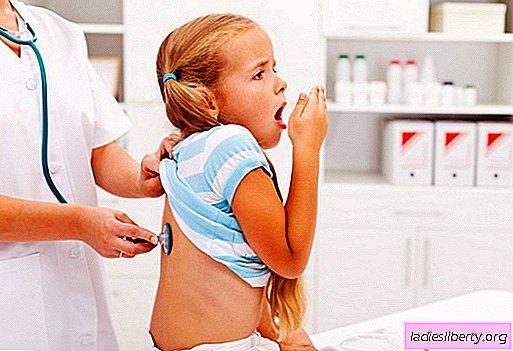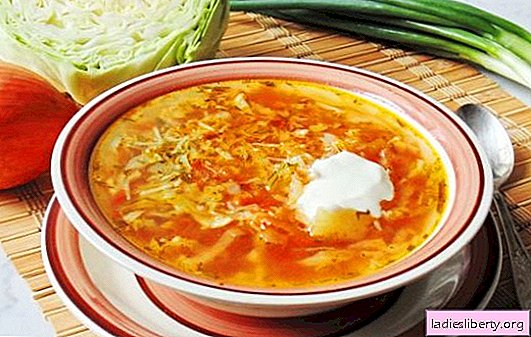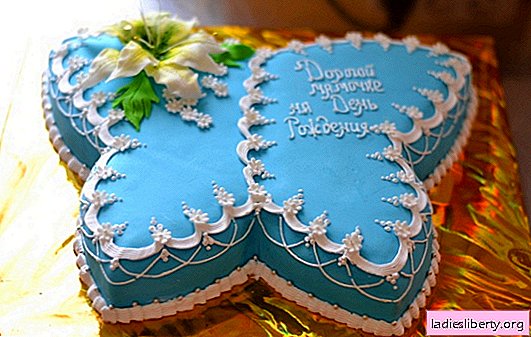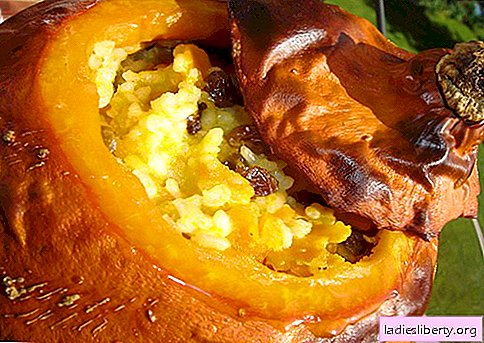
An annoying cough of a beloved child, often with a whistle and wheezing, literally throws parents into a panic, and not in vain. Indeed, ignoring him, careless “coughing and stopping”, can lead to tragic consequences. Disappointing statistics indicate that the main cause of death for children under 4 years of age are precisely respiratory problems. Most often, pneumonia is to blame for this, which has arisen as one of the complications of bronchitis. Therefore, do not self-medicate or not pay attention to coughing so as not to miss the time to contact a doctor.
What is bronchitis?
An inverted, spreading tree, with numerous branches and small branches, such can be seen in the x-ray of the bronchi. If you follow the allegory, the roots of the “tree” are the larynx and nose, the trunk is the trachea, the large and small branches filling the lung tissue are the bronchi, and the tiny alveoli act as leaves. Infected with viruses and bacteria, air entering the body when breathing, most often gets rid of the dangerous components in the nasopharynx, causing rhinitis, pharyngitis or tonsillitis.
Sometimes, especially if the body is weakened, microbes manage to get deeper and cause bronchitis or pneumonia. In this case, the inner surface of the bronchi swells and narrows, and in response to the resulting inflammation, a huge amount of mucus begins to form. Getting rid of it, the bronchi contract, and spasms occur. In the presence of three components - edema, a large amount of mucus and bronchospasm - the pediatrician diagnoses bronchitis.
Bronchitis in children - types
Bronchitis can be primary when the inflammatory process begins in the bronchi, and secondary, accompanied by measles, whooping cough, flu and other diseases. According to the duration of the course and the frequency of occurrence, children's bronchitis can be divided into three types:
1. Acute - the disease lasts from 10 to 21 days. This species also includes:
- obstructive - with syndromes of bronchial obstruction, more often children from 2 to 3 years old;
- bronchiolitis - inflammation of the bronchioles, babies get sick in the first year of life. Danger of the possibility of developing acute respiratory failure, is treated only in a hospital.
2. Recurrent - three to four times during the year the doctor diagnoses bronchitis;
3. Chronic - if for two years at least once a year the child has been ill with prolonged (from 3 months) bronchitis.
Bronchitis in children is classified and for the reasons for its occurrence:
- viral - the causes of the disease are adenoviruses, influenza or parainfluenza;
- bacterial - pathogens: staphylococcus, chlamydia, streptococcus, hemophilic bacillus, mycoplasma;
- allergic - arises from exposure to external stimuli: pollen, pet hair, tobacco smoke, household chemicals, dust and exhaust gases.
Signs (symptoms) of bronchitis in children
Bronchitis in children develops gradually, and its symptoms depend on the type of disease. The main difference between this ailment and others occurring with cough is the presence of temperature and profuse sputum. The most characteristic signs of childhood bronchitis:
- elevated temperature - from an inconspicuous 37.5 degrees to frightening parents of the thermometer 39 ° C;
- lack of appetite;
- severe weakness, drowsiness;
- labored and shallow breathing;
- cough.
Depending on the cause of bronchitis, additional symptoms may join.
Acute bronchitis in children
A fifth of childhood bronchitis is an independent disease caused by bacteria, and 80% - as a result of exposure to viruses or bacterial complications after their introduction. The onset of the disease can be inflammation of the upper respiratory tract with weakness and fever. Then a dry cough is connected, gradually turning into a wet one. This usually happens on the fifth or sixth day from the onset of the disease and is a comforting sign - that means the body successfully copes with the virus.
Abundant sputum becomes a real test for babies - they are not able to spit it out, they swallow it, which can cause vomiting. At the very beginning of the disease, the temperature can be 38-38.5 degrees, although with a mild form of the disease, it is quite capable of remaining at the level of 37-37.2 degrees. Successfully proceeding bronchitis can be cured in 10-20 days, however, the timing depends on the correctness of the selected set of measures and the state of the baby’s immune system. If treatment has not been started on time, or if mom is trying to cope with bronchitis on her own, unpleasant and dangerous complications are possible.
Obstructive bronchitis in children
Ordinary bronchitis is not very pleasant, like any disease, but it is relatively difficult and malleable for home treatment. It is quite another thing when the obstruction (narrowing) of the bronchi joins. Obstructive bronchitis is a very common disease in young children due to the rather narrow lumen of the bronchi in children under three years of age. Almost always, the disease is associated with a viral infection. In addition to physiological characteristics, the prerequisites for the formation of the disease are a tendency to allergic reactions, a very frequent predisposing factor is passive smoking. Vivid manifestations of the disease plunge parents into a panic state:
- debilitating paroxysmal cough, sometimes causing vomiting;
- loud and hoarse breathing with a whistle;
- abnormal body movements - with each inhalation, the chest is swollen, and the gaps between the ribs are retracted.
There are also some symptoms, the appearance of which urgently needs to seek help from a doctor:
- the appearance of shortness of breath - the respiratory rate increases by at least 10% compared with the norm. For the smallest children, from one to three years, the number of inspirations-exhalations with bronchitis should not be more than forty per minute. It is better to consider it during the baby’s sleep, because during anxiety, play or crying, shortness of breath can be associated with emotions;
- obstruction is combined with intoxication, which is manifested by nausea, fever, severe weakness and lack of appetite;
- blue nails and nasolabial triangle - these signs indicate insufficient oxygen supply.
Quickly show the baby to the doctor, and then, when the obstruction is observed in a child up to a year. In all these cases, most likely, immediate hospitalization will be required, mom should be prepared for this. But even if bronchitis proceeds according to the usual scenario, you should not ignore regular medical examinations - he will listen and examine the baby, adjust the dosage of medications, and give useful tips on care and treatment.
Important! Frequent obstruction can cause bronchial asthma, and pneumonia can hide under the guise of bronchitis!
Allergic bronchitis in a child
This disease occurs both under the influence of bacteria and viruses, especially staphylococcus, and is the result of an attack of allergens - pollen, dust, hair of cats or dogs. It is sometimes difficult for small children to distinguish allergic bronchitis from asthma, since bronchospasm in them is not pronounced. The main symptom is a persistent cough, often arising from physical exertion and negative emotions. The cough is initially dry and painful, can later become wet, and especially pests the baby at night. Most often, the temperature remains normal, only weakness and sweating bother the child. Relapses of the disease can be repeated twice a month. The duration of the disease is from several hours to three weeks. It is characteristic that in a baby suffering, for example, an allergy to his beloved pussy, when he leaves home, all signs of the disease disappear without a trace. In a third of patients, allergic bronchitis can go into asthma.
Treatment of bronchitis in children
Most mummies are sure that it will not be possible to cope with bronchitis without antibiotics. In fact, like any other viral disease, antimicrobials do not work on bronchitis. They are effective only in some cases, which will be considered later. What will help the baby cope with the disease?
1. Abundant drinking - sputum liquefies and clears throat easier without drying out on the walls of the bronchi;
2. Antipyretic agent at a temperature above 38 degrees;
3. Humidity in the children's room should be at least 70%, and the temperature should not exceed 20-21 degrees. The room should be regularly ventilated, carry out wet cleaning, air humidifiers can be used;
4. Fresh air is simply necessary for the patient. In the acute phase, you can take the baby to the balcony, even if there is such an opportunity, organize a daytime sleep on it. Later, when the temperature drops, it is useful to take the child on leisurely walks.
5. Medicines that dilute sputum and promote its withdrawal should be prescribed by a doctor. The fact is that only he can take into account all risk factors. For example, mucolytics, which make sputum less viscous and facilitate its discharge, can cause serious problems in babies up to two years old - they simply are not able to get rid of a huge amount of mucus, and it accumulates in the lungs. Whether inhalation is needed - the doctor will also decide and choose the most suitable drug.
The main treatment for bronchitis is carried out in three directions:
- getting rid of dry painful cough;
- removal of edema of the bronchi and purification of sputum;
- the fight against the virus.
Wheezing and shortness of breath signal a huge amount of accumulated fluid. In this case, the doctor, given the age of the child, prescribes inhalations, physiotherapeutic procedures, and therapeutic massage. Mom can help the baby with warming compresses, warming with salt or buckwheat. A compress with the help of warm sunflower oil helps well - in it you need to moisten the marlka, squeeze and put on the right side of the baby’s breast and back. Cover with cellophane, a layer of cotton wool and secure with a bandage or clothing. It is better to make a compress at night and only in the absence of an elevated temperature.
Attention! Mustard plasters and banks are strictly forbidden for children under 5 years old and in the presence of fever!
The doctor will definitely choose the most effective set of measures, and mother should strictly follow his recommendations.
Are antibiotics used in the treatment of bronchitis in children
In some cases, the use of antibiotics is justified and even necessary. The doctor prescribes these drugs if:
- high temperature lasts more than four days;
- there is purulent sputum;
- against the background of temporary improvement and treatment, the child has a new sharp jump in temperature and pronounced signs of intoxication;
- a blood test indicates the presence of an inflammatory process.
Most often, antibiotics are prescribed to crumbs up to six months suffering from bronchiolitis, and children with signs of bacterial bronchitis.
Prevention of bronchitis in children
Any ailment is always better to prevent than to treat for a long and painful time. There are simple rules that will help to avoid an unpleasant and sometimes dangerous disease:
- in the room where the child is, smoking is unacceptable;
- if possible, try to monitor the humidity in the room and prevent the appearance of sharp odors in it;
- temper the baby, do not wrap it, reduce ARVI disease to a minimum;
- monitor the provision of normal nasal breathing, fight prolonged runny nose. If the doctor advises the removal of adenoids - it is worth listening to the recommendations;
- A good rest, children and health trips to the sea contribute to the strengthening of immunity and put a barrier to unwanted infections.
What does Dr. Komarovsky say about bronchitis in children
In 99% of cases, bronchitis is a viral infection, the treatment of which does not require the use of antibiotics. And only 1% is bacterial bronchitis, in the diagnosis of which it is impossible to make a mistake. Conventional bronchitis is treated traditionally - warm drinking, bed rest, taking antipyretic drugs. The main requirement is the inadmissibility of self-medication, the necessary medications should be prescribed by a doctor. The outcome of the disease and methods of prevention are specific actions of the parents, and a call to the doctor should be timely.











